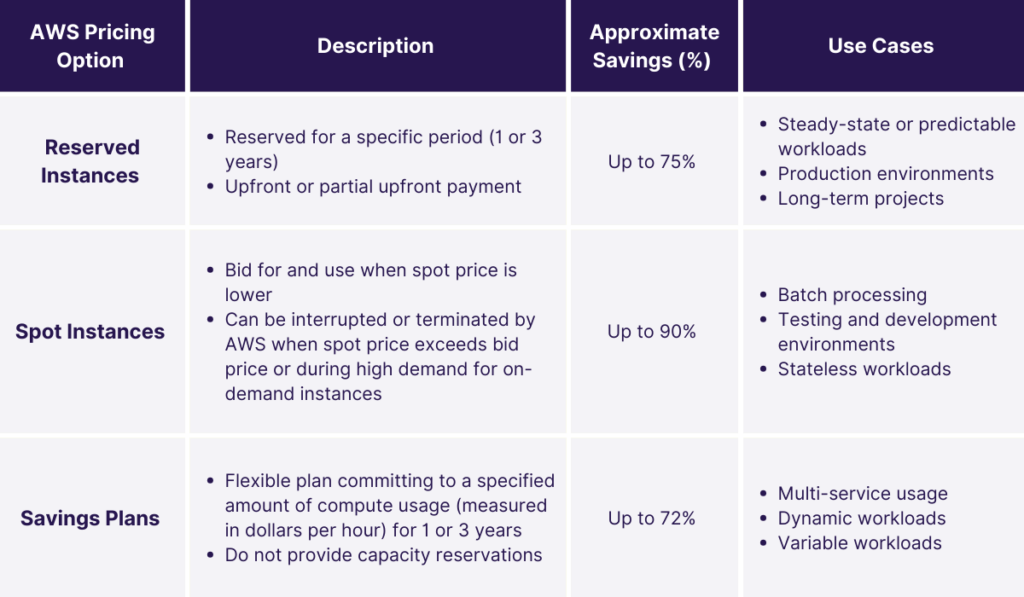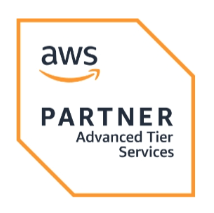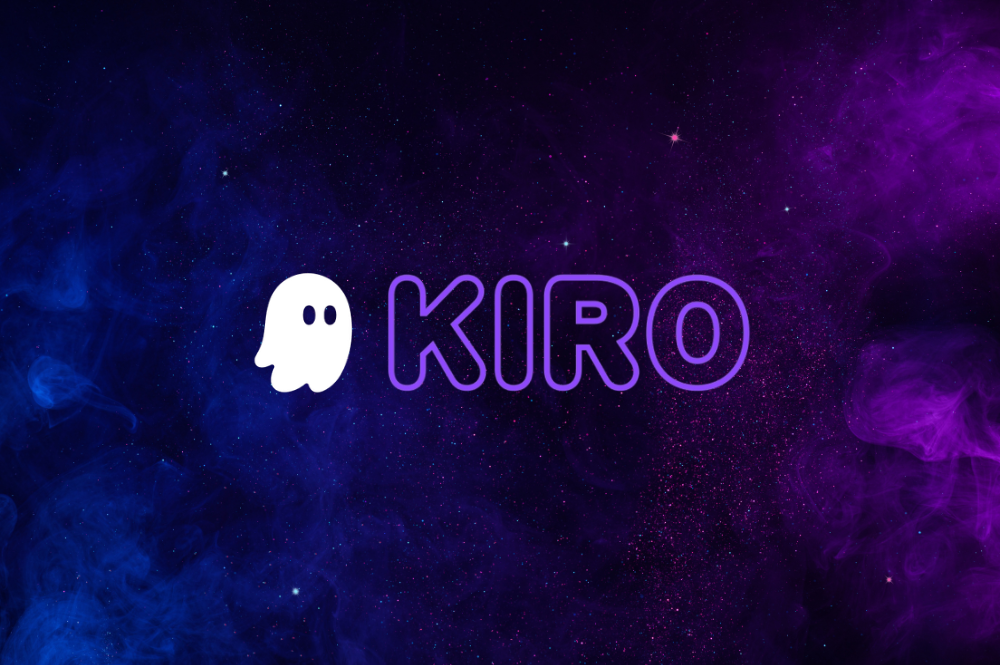We’ve all witnessed those occasional rogue costs that slip through the cracks, only to reveal themselves when the monthly AWS bill arrives. Even small companies find themselves in difficult financial predicaments due to a lack of understanding of their cloud costs. In fact, a recent study by Flexera reveals that managing cloud spend remains the top cloud security challenge in 2024.
Controlling cloud spend presents a unique set of challenges, and this is where iterative AWS cost optimization comes into play. It’s about consistently refining your cloud infrastructure to strike the perfect balance between cost and performance. At Cloudelligent, we’re here to guide your business through this intricate process. This blog serves as a comprehensive roadmap to help you lower and manage your cloud spend effectively while maintaining optimal performance.
We also specialize in optimizing cloud migrations to maximize value while keeping costs in check. Interested in learning more? Dive into our proven strategies for successful AWS cloud migration and cost optimization in our blog, 5 Proven Strategies for Minimizing Costs During AWS Cloud Migration.
6 Practices You Should Adopt to Lower Your AWS Billing
Implement these best practices to gain control over your AWS costs and maximize your cloud investment.
1. Give Your Technology Stack a Modern Facelift
Legacy architectures and applications can be a drain on your AWS resources and budget. As Amazon Web Services continue to evolve, modernizing your technology stack is pivotal for efficient AWS cost management. Some strategies that you can use to modernize your architecture, applications and workloads are:
- Refactoring Monolithic Applications Into Microservices: This can make your applications more modular and scalable which leads to cost savings.
- Shifting to Kubernetes: Use Kubernetes to help deploy and manage your containerized applications cost-effectively.
- Adopting Serverless: Serverless computing allows you to run your workloads without having to manage any infrastructure which can lower costs.
- Continuous Integration/Continuous Deployment (CI/CD): Implement CI/CD pipelines to streamline application updates and reduce deployment-related costs.
If you’re looking to modernize your applications and boost developer productivity, our Kubernetes solutions can help you get started. Schedule a free consultation today to begin your journey toward efficient, cost-effective application deployment and management.
2. Find the ‘Perfect’ Fit for Resources
One of the most effective ways to optimize your AWS costs is to rightsize your resources according to your actual needs. This means adjusting the type, size, and number of your instances, containers, and databases to match the performance and capacity requirements of your workloads. By rightsizing your resources, you can avoid paying for unused or underutilized resources, and improve the efficiency and scalability of your infrastructure.
- Analyze Resource Usage: Begin by thoroughly assessing your existing resource usage and identifying overprovisioned or underutilized instances.
- Set up Alarms: You can use alarms to notify you when your resource usage exceeds a certain threshold.
- Implement Auto Scaling: Set up auto-scaling policies to automatically adjust your resource capacity based on real-time demand and prevent under provisioning during peak periods.
3. Identify and Get Rid of Those ‘Zombies’
Just as zombies can haunt the fringes of our imagination, ‘zombie’ resources can lurk in your AWS environment and silently drain your budget. These are the idle or forgotten assets that continue to incur costs without contributing to your operations such as:
- Orphaned EBS Volumes: Block volumes that are not attached to any Amazon EC2 instance but still exist in your account.
- Unattached IP Addresses: Elastic IP addresses that are not associated with any EC2 instance or network interface.
- Idle Load Balancers: Any load balancers that have no active traffic or registered instances.
- Unused Snapshots: Snapshots of EBS volumes or RDS instances that are no longer needed for backup or recovery purposes.
Automation Tools to Efficiently Manage Resource Lifecycles
There are a number of cloud cost management tools that you can use to efficiently automate the lifecycles of your AWS resources.
- AWS Cost Explorer: This can help you to identify unused resources by showing you your resource usage over time.
- AWS Trusted Advisor: Provides recommendations for optimizing your AWS resources, including identifying zombie resources.
- AWS Resource Groups: These can help you organize your AWS resources so that you can easily identify and manage them.
4. Tame Your Budget With Reserved, Spot, and Savings Plans
One of the most effective ways to reduce your AWS costs is to use different types of instances and plans that offer discounts or lower prices for your compute resources. These include:

Figure 1: Flexible AWS Pricing Options for Cost Optimization
By strategically combining these pricing options, you can fine-tune your AWS cost optimization strategy to maximize savings while maintaining the flexibility to meet your workload demands.
5. Vanquish Your Data Transfer Costs
One of the most overlooked aspects of cost optimization is minimizing data transfer costs within AWS. Data transfer costs are the fees that AWS charges for transferring data between different services, regions, and the internet. Data transfer costs can vary depending on several factors and scenarios, such as:
- Data Source and Destination: Data transfer within the same region is free, but data transfer across regions can incur charges.
- Protocols: Some services, such as Amazon S3, Amazon EC2, and Amazon RDS, have different pricing models for data transfer based on the protocol used (HTTP, HTTPS, or TCP).
- Traffic Pattern and Volume: Data transfer costs can increase with higher traffic volume and peak demand, especially for data transfer to and from the internet.
To mitigate these costs, consider these services:
- AWS Direct Connect: Establish dedicated network connections to AWS to reduce data transfer costs and enhance network reliability.
- AWS VPN: Implement Virtual Private Networks (VPNs) to secure data transfer and reduce costs, especially for remote offices.
- Amazon CloudFront: Easily cache and distribute content to optimize data delivery and reduce latency.
- Amazon S3 Transfer Acceleration: Speed up data transfers to and from Amazon S3 which routes data through Amazon CloudFront’s globally distributed edge locations.
You can witness the impact of these strategies first-hand! Discover how we helped Corios save 26% on AWS costs by optimizing their infrastructure and reducing data transfer expenses. Read the full case study here.
6. Master the Art of Continuous Measurement, Monitoring, and Enhancement
Your AWS cost optimization journey doesn’t end with initial cost-saving efforts. It is a continuous process that requires ongoing monitoring, analysis, and improvement. As the cloud landscape evolves and your business needs change, so too should your cost optimization strategy.
There are a variety of cloud cost optimization tools that can help you to track expenses, performance, and resource utilization.
- AWS Budgets: Set up budgets within AWS Budgets to monitor spending and receive alerts when costs exceed predefined thresholds.
- AWS Cost Anomaly Detection: Utilize this tool to automatically detect unusual spending patterns and take action promptly.
- ProsperOps: We recommended this AI-powered cost optimization tool that automatically adjusts AWS resources to match demand and reduce waste.
It is also important to schedule regular optimization cycles and quarterly reviews. This will help you to track your progress and make sure that you’re on track to achieve your cost optimization goals.
Next Steps to Accelerate Your AWS Cost Optimization Journey
If you’re ready to take your cost optimization to the next level, Cloudelligent is right here. Our team of experts can assist your business in optimizing cloud resources, usage, and costs while maintaining optimal performance levels.
Ready to take control of your AWS spending? Schedule your FREE Cost Optimization Assessment with Cloudelligent today! We’ll identify key areas for savings, guide you through the optimization process, and ensure your AWS environment is set up for long-term success. Let’s make your cloud work smarter, not harder.










